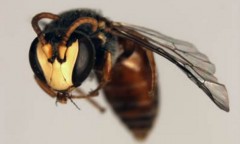By Arthur Dominic J. Villasanta , | March 20, 2017

Researchers including MIT professor Daniela Rus (left) and research scientist Stephanie Gil (right) have developed a technique for preventing malicious hackers from commandeering robot teams’ communication networks.
Researchers from MIT have developed a new technique that prevents malicious hackers from taking control of the communication networks of robot teams, and therefore the robots themselves.
The technique described in the journal Autonomous Robots provides an added layer of security in systems that encrypt the communications commanding robots. With this technique, researchers from MIT's Computer Science and Artificial Intelligence Laboratory and their colleagues have improved the security for multirobot systems, which heretofore has remained seriously deficient.
Like Us on Facebook
"The robotics community has focused on making multirobot systems autonomous and increasingly more capable by developing the science of autonomy. In some sense we have not done enough about systems-level issues like cybersecurity and privacy," said Daniela Rus, an Andrew and Erna Viterbi Professor of Electrical Engineering and Computer Science at MIT and senior author on the new paper.
She noted that when multirobot systems are deployed in real applications, these robots are exposed to all the issues such as hacking current computer systems are exposed to.
"If you take over a computer system, you can make it release private data -- and you can do a lot of other bad things. A cybersecurity attack on a robot has all the perils of attacks on computer systems, plus the robot could be controlled to take potentially damaging action in the physical world. So in some sense there is even more urgency that we think about this problem."
Most planning algorithms in multirobot systems rely on some kind of voting procedure to determine a course of action. Each robot makes a recommendation based on its own limited, local observations, and the recommendations are aggregated to yield a final decision.
A natural way for a hacker to infiltrate a multirobot system is to impersonate a large number of robots on the network and cast enough spurious votes to tip the collective decision, a technique called "spoofing."
The researchers' new system analyzes the distinctive ways in which robots' wireless transmissions interact with the environment, to assign each of them its own radio "fingerprint." If the system identifies multiple votes as coming from the same transmitter, it can discount them as probably fraudulent.
-
Use of Coronavirus Pandemic Drones Raises Privacy Concerns: Drones Spread Fear, Local Officials Say

-
Coronavirus Hampers The Delivery Of Lockheed Martin F-35 Stealth Fighters For 2020

-
Instagram Speeds Up Plans to Add Account Memorialization Feature Due to COVID-19 Deaths

-
NASA: Perseverance Plans to Bring 'Mars Rock' to Earth in 2031

-
600 Dead And 3,000 In The Hospital as Iranians Believed Drinking High-Concentrations of Alcohol Can Cure The Coronavirus

-
600 Dead And 3,000 In The Hospital as Iranians Believed Drinking High-Concentrations of Alcohol Can Cure The Coronavirus

-
COVID-19: Doctors, Nurses Use Virtual Reality to Learn New Skills in Treating Coronavirus Patients









